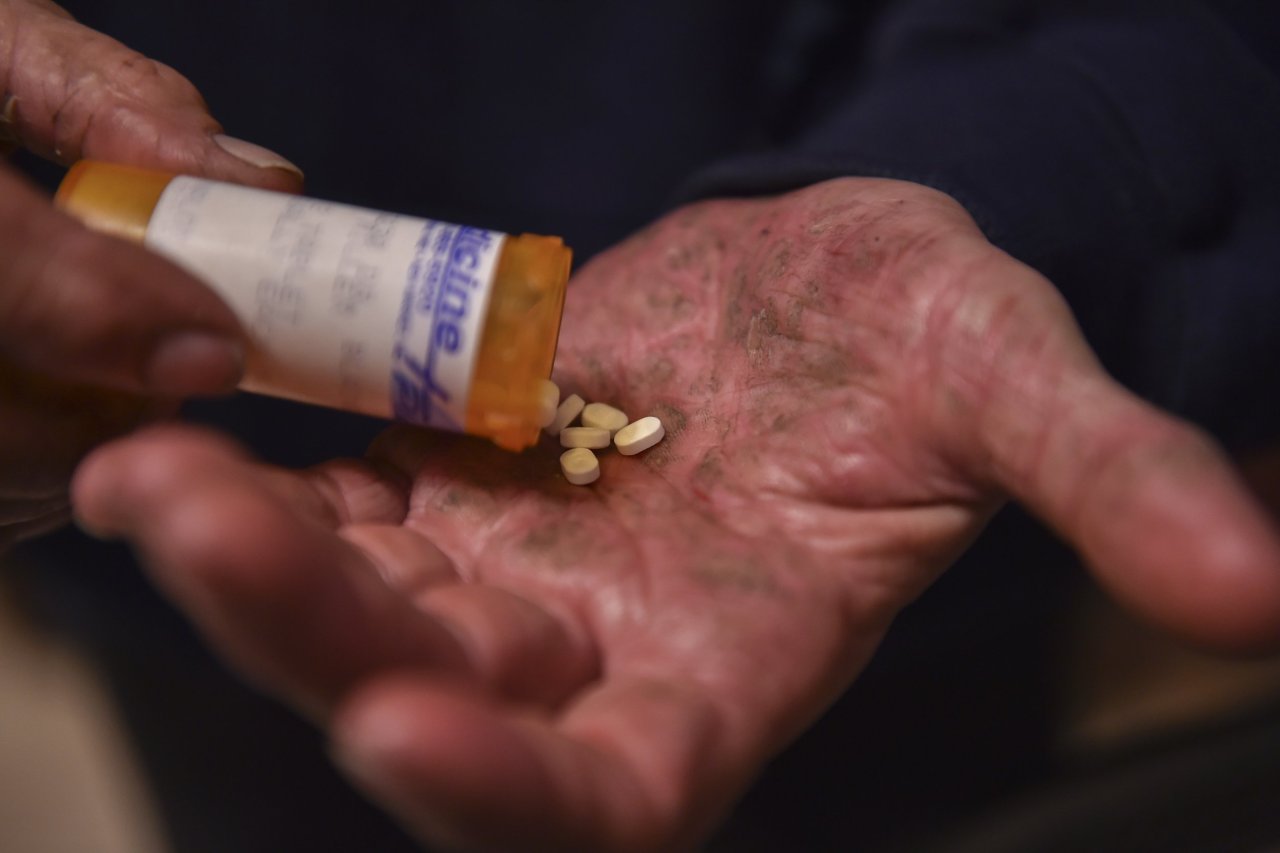It was an uncharacteristically quiet afternoon at Dee's Place, a warehouse turned community center tucked down an alleyway in blighted east Baltimore, but Deborah Agus was nervous. Perched on one of the metal folding chairs that lined part of the warehouse, she alternated between cautious optimism and anxiety about the future of the opioid treatment programs she runs.
The root of her fears lies about an hour away, in Washington, D.C., where Republicans are pushing a new plan to repeal Obamacare and fundamentally restructure Medicaid, the 50-year-old government health program that covers America's poor and disabled. Obamacare not only made people in Agus's program—mostly poor working men—eligible for Medicaid but also helped them access the health care services they need to deal with addiction, as well as the panoply of health issues that often accompany it. "For our program, getting people on Medicaid is key," says Agus, adding that the Republicans' plan to dramatically shrink federal Medicaid funding would be "devastating." She was hopeful, however, that it wouldn't pass.
RELATED: Opioid dependency begins soon after initial use
Indeed, the failure of the GOP health care overhaul in March offered a temporary reprieve to thousands of people working to stave off the opioid crisis. But as President Donald Trump and House Republicans signaled in April, they're still looking to revive their repeal. And the provisions they're pushing as part of their latest compromise could lead to deeper cuts in addiction treatment programs, a blow to states at the epicenter of the crisis, including Trump strongholds such as West Virginia and Kentucky.
A year ago, in the thick of the 2016 presidential election, both Democrats and Republicans promised a major assault on opioid addiction. The reality, however, has yet to match the rhetoric, with funding and treatment options still lagging well behind the need. Under Obamacare, addicts have started to receive more access to treatment, but progress has been slow. As Agus explains, it's taken time for "the gears [to] get moving." But the Republicans' proposals, she says, would "stop things that had been finally moving forward."
Part of the problem: The GOP's attempts to undo the Democrat-backed health law are leading to uncertainty among insurers and investors. And that will likely result in further lags.
Harvard Medical School health care economist Richard Frank says there's a pretty simple reason for the sparse number of clinics and other treatment facilities around the country. Before Obamacare, the funding for addiction treatment was minuscule—and it relied almost entirely on grants. The new health care law brought millions more people into the insurance market, a disproportionate number of whom suffered from mental illness and addiction, and required insurers to cover treatment for those conditions as one of 10 "essential health benefits" requirements. As a result, Frank says, "you saw a lot of money being poured into setting up substance use disorder clinics and such in anticipation of [patients'] expanded purchasing power" shortly after the law was passed. Now Republicans are not only threatening to shrink the marketplace but also targeting the requirement that insurers cover addiction treatment and related health services.
Of course, when it comes to fighting addiction, the impact of Obamacare is more promise than reality. Millions more drug addicts now have insurance coverage because of the law, but that has not translated into a significant jump in the number of people getting treatment. A report published earlier this year found the uninsured rate for people suffering from mental health or addiction problems dropped by roughly a quarter between 2011 and 2014, largely thanks to Obamacare's expansion of Medicaid. However, the use of mental health treatment went up by only 2 percent, and the rate of addiction treatment did not change. Frank, however, notes that if you look at treatment rates just for low-income people, there are signs they've increased "a fair bit."

Insurance coverage is necessary but not sufficient to get people treatment for addiction, says Johns Hopkins University's Bloomberg School of Public Health professor Brendan Saloner, the report's lead author. Besides a lack of insurance, there are plenty of other barriers. Among the opioid users Agus works with in Baltimore, there is a stigma about addiction and distrust of medical providers in neighborhoods that have had little contact with them. "It's not as if they're jumping into treatment," she says. Saloner lists a few other hurdles: "They may not know where to go, there may not be treatment programs where they live," and there are often long waiting lists for available programs.
Waiting lists remain a problem in the Appalachian foothills of western Maryland, according to Carin Miller, the founder of Maryland Heroin Awareness Advocates. She says standard waiting time to get into a detox facility in western Maryland is four to six weeks, which is an improvement: "It used to be six-plus" weeks. Miller lives in Mount Airy, one of many idyllic Civil War–era towns that dot this largely rural area about an hour west of Baltimore. Like other parts of rural America, it has seen a spike in opioid-related overdoses this decade, particularly since 2013, when a dangerous form of the drug fentanyl began to make its way into the heroin supply across the East Coast. Maryland saw its opioid-related deaths increase by 50 percent between 2013 and 2015, a surge in fatalities that prompted Republican Governor Larry Hogan to declare a state of emergency earlier this year.
Like many activists trying to draw attention to the opioid crisis, the cause is personal for Miller. She started what has become a statewide network of treatment advocates and support groups after both her husband and son struggled to find treatment for addiction to Percocet. She considers herself fortunate, she says, because unlike many families she's worked with, her son and husband are still alive. Miller says she is now seeing "positive movement" from some public officials and health providers, but it's far from the response she'd expect if, say, "a hurricane came through here." Much like a natural disaster, the opioid epidemic has left a path of destruction in people's lives, Miller says. "They end up with no money, no health care, unhealthy body, bad teeth, and there's just so many symptoms that come along."
These health challenges were evident at a March meeting of the Project Connections support group in east Baltimore. One 50-something man with a toothy grin and an easy laugh ticked off his issues: glaucoma, high blood pressure, an ulcer and organ damage from his opioid use. But, he added, optimistically, "I'm dealing with it, you know?" Another middle-aged man drew murmurs of encouragement when he announced his wife had recently helped him get an appointment to see a psychiatrist. People fighting addiction are, on average, more likely to also suffer from other serious health conditions, such as mental illness. Their drug use takes a toll on their bodies, leading to problems like gastritis and liver disease. And they are at greater risk of congestive heart failure and pneumonia, according to the Association for Behavioral Health and Wellness. Heroin addicts are at high risk for HIV, AIDS and hepatitis C because of their use of needles.
RELATED: Where's Trump's opioid crisis plan?
In addition to ramping up Medicaid funding and getting more people insured, one of the primary ways Obamacare has tried to combat drug use is by making it easier for addicts to get the health care they need. In addition to requiring insurers to cover mental health and addiction-related services, the law has created new programs to encourage care that brings all the doctors treating a patient together in one coordinated system. "We need to find ways to get them into comprehensive and well-coordinated treatment," Saloner says, "[but] if there aren't the resources to make it happen, it's probably not going to happen."
It takes time to deploy a network of case managers or to enroll people in programs like Agus's that help those in treatment get on Medicaid and link them to primary care physicians. Several states, including Maryland, have pilot programs to better centralize care, including for people battling addiction. But they're not widespread. And Frank, the Harvard economist, says it will take more time before the supply of treatment facilities catches up with demand. Even with the surge in insurance coverage and public and private investment since Obamacare, "those things don't come up overnight," he says. "And you need the workforce to do it."
The funding pipeline has also been slow to reach providers. Agus says she's struggling to find funding to expand her programs, which include providing mental health care and partnering with local jails to help treat inmates leaving prison. Though Baltimore has the highest rate of opioid-related deaths in Maryland, she's been unable to secure money from the city and is instead turning to private foundations.
The concern now is that the threats to Obamacare will continue to slow or even halt the progress being made. The Trump White House has established a commission on drug addiction and opioids. And the Health and Human Services Department has started to hand out state grants funded by a bill Congress passed last year. But as Frank pointed out in a January op-ed, that law's $1 billion in funding for opioid treatment is a fraction of the estimated $5.5 billion worth of mental health and addiction treatment funding Obamacare covers for low-income people each year. And if the latest version of the GOP plan, currently under negotiation, becomes reality, states would be allowed to waive the "essential health benefits," which would add another roadblock to treatment. "We know what happens to...addiction and mental health care under insurance when you don't have those types of requirements," says Frank. "You're looking at significant cutbacks."
Miller understands why people might be pushing to repeal Obamacare. She believes the law has hurt some Americans, including her, by increasing health insurance costs. But she's willing to pay that price. "It affected a lot more people in a better way," Miller says, particularly when it comes to mental health and addiction. While she doesn't think the government is responding to the opioid crisis with the urgency it should, it's still far better than the alternative—repealing Obamacare and shrinking federal health care funds. "I'll put it this way," Miller says, "before Obamacare, there's nothing to talk about because [treatment options are] nonexistent, so at least there's [now] something there for our loved ones."





















